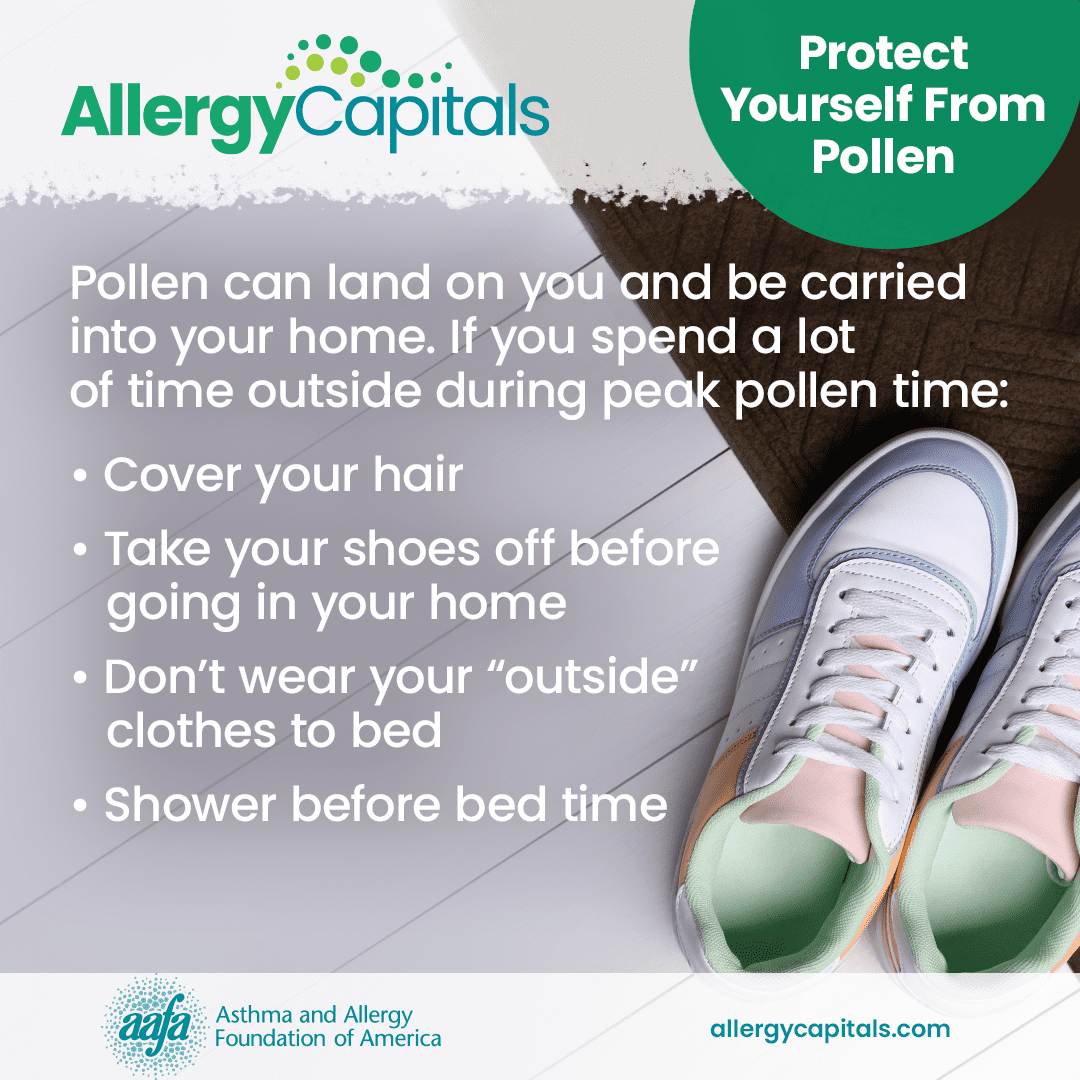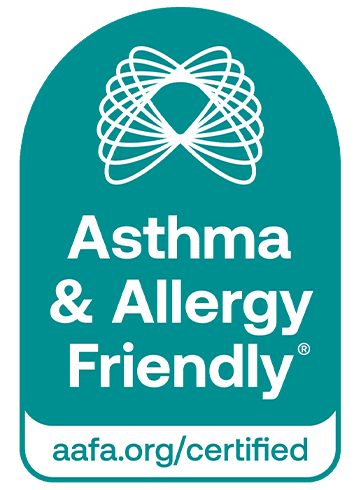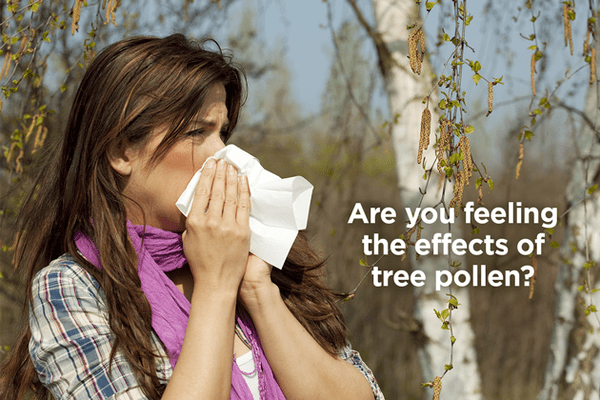Allergies
Pollen Allergy
Each spring, summer, and fall − and even in the winter in some states − plants release tiny pollen grains to fertilize other plants of the same species. Most of the pollen that causes allergic reactions comes from trees, grasses, and weeds. These plants make small, light, and dry pollen grains that travel by the wind. They then can find their way into your eyes, nose, and lungs, causing allergy symptoms if you have a pollen allergy.
Flowering plants that spread their pollen by insects − like roses and some trees, like cherry and pear trees − usually do not cause allergic rhinitis.
There are three main types of pollen allergy: tree pollen allergy, grass pollen allergy, and weed pollen allergy.
Tree Pollen Allergy
Tree pollen is the first pollen to appear each year in the United States. It is responsible for most spring pollen allergy symptoms. It also often overlaps with grass pollen in the spring and summer.
Throughout the U.S., trees produce the most pollen from March through May. But in some regions, such as the South, trees may produce pollen as early as January and peak at multiple times during the year.1
Some of the trees that cause the most allergy symptoms are:
|
|
Grass Pollen Allergy
If you have a grass pollen allergy, where you live may factor into when you have symptoms.
In Northern U.S, grass pollen usually appears in the late spring or early summer. In the South, grasses may release pollen during many seasons and could trigger symptoms throughout the year.
There are hundreds of types of grasses, but only a few cause allergy symptoms. Your location may determine which grasses may cause your symptoms.
Some of the most common types of grasses that cause allergy symptoms are:
- Bahia
- Bermuda
- Fescue
- Johnson
- Kentucky blue
- Timothy
Weed Pollen Allergy
Weed pollen, especially ragweed, causes allergy symptoms for many Americans. About 15% of people are allergic to ragweed pollen.2
Weed pollen appears in the late summer and fall. Ragweed grows in 49 states and can travel hundreds of miles in the air. This makes it hard to avoid.
Other weeds are also responsible for weed pollen allergy. Common weeds that can cause symptoms include:
- Ragweed
- Burning bush
- Cocklebur
- Lamb’s-quarters
- Mugwort
- Pigweed
- Russian thistle
- Sagebrush
- Tumbleweed
What Is a Pollen Count?
A pollen count is how much pollen is in the air. To get a pollen count, a device such as an air sampler is used to capture pollen, and then the sample pollens are identified and counted. The American Academy of Allergy, Asthma & Immunology’s (AAAAI) National Allergy Bureau™ collects pollen and reports these counts around the U.S.
Some websites or weather news report pollen forecasts also. Pollen forecasts are estimates, just like a weather forecast. Most of the time, pollen forecasts will only report on the most common types of pollen. This may help you identify which type of pollen is present in your area and triggering your allergy symptoms. Pollen forecasts can help you prepare, but you may feel allergy symptoms at times when the forecast predicted low or moderate amounts of pollen.
What Are the Symptoms of Pollen Allergy?
People with pollen allergies only have symptoms when the pollens they are allergic to are in the air. Symptoms include:
- Runny nose (also known as rhinorrhea – this is typically a clear, thin nasal discharge)
- Stuffy nose (due to blockage or nasal congestion – one of the most common and troublesome symptoms)
- Sneezing
- Itchy nose, eyes, ears, and mouth
- Red and watery eyes
- Swelling around the eyes
If you have asthma and pollen makes your asthma worse, you may have allergic asthma. It is the most common type of asthma.
What Is Pollen Food Allergy Syndrome and How Is It Related to Pollen Allergy?
If you have symptoms of an allergic reaction in your mouth or throat when you eat certain fruits, vegetables, or nuts, it may be related to a pollen allergy. This is called pollen food allergy syndrome (PFAS) or oral allergy syndrome (OAS).

PFAS happens because some tree, grass, or weed pollen is similar to the protein in some fruits, vegetables, and nuts.3 Your immune system gets confused and can’t tell the difference between the two. Eating these foods may cause your mouth, lips, tongue, and throat to itch or swell. These foods may include apples, cherries, pears, and more. Birch and alder tree pollen, as well as ragweed pollen, cause many PFAS food reactions.
If you think you may have PFAS, talk with an allergist.
How Do Doctors Diagnose Pollen Allergy?
Doctors use two tests to diagnose a pollen allergy.
Skin Prick Test (SPT)
In prick/scratch testing, a nurse or doctor places a small drop of the possible allergen on your skin. Then the nurse will lightly prick or scratch the spot with a needle through the drop. If you have the immunoglobulin E (IgE) antibodies (proteins in the immune system) toward that allergen, the spot will turn red, swell, and itch within 15 to 20 minutes. You may also see a wheal. A wheal is a raised, round area that looks like a hive. Usually, the larger the wheal, the more likely you are to be allergic to the allergen.
A positive SPT to a certain pollen allergen does not necessarily mean you have an allergy. Doctors must compare the skin test results with the time and place of your symptoms to see if they match.
Specific IgE Blood Test
Blood tests are helpful when you have a skin condition or are taking medicines that interfere with skin testing. They may also be used in children who may not do well with skin testing.
Your doctor will take a blood sample and send it to a laboratory. The lab adds the allergen to your blood sample. Then they measure the amount of antibodies your blood produces to attack the allergens. This test is called Specific IgE (sIgE) Blood Testing. (This was previously and commonly referred to as RAST or ImmunoCAP testing.)
As with skin testing, a positive blood test to an allergen does not necessarily mean that an allergen caused your symptoms.
How Can I Prevent an Allergic Reaction to Pollen?
There are actions you can take to reduce allergic reactions to pollen:
- Start taking allergy treatments before pollen season begins. Most allergy treatments work best when taken this way. This allows the treatments to prevent your body from releasing histamine and other chemicals that cause your symptoms.
- Limit your outdoor activities when pollen counts are high. This will cut down the amount of pollen allergen you inhale and help reduce your symptoms.
- Keep windows closed during pollen season or peak pollen times.
- Use central air conditioning or air cleaners with a CERTIFIED asthma & allergy friendly® filter and/or HEPA filtration to reduce indoor airborne allergens (including pollen that may enter your home through doors, windows, on your clothes, and on pets).
- Wear sunglasses and cover your hair when going outside. This will help keep pollen out of your eyes and off your hair.
- Shower daily before going to bed. This will remove pollen from your body and keep it off your bedding.
- Wash bedding in hot, soapy water once a week.
- Limit close contact with pets that spend a lot of time outdoors. Wipe furry animals off when they come inside or bathe them weekly (if appropriate).
- Change and wash clothes worn during outdoor activities.
- Dry your clothes in a clothes dryer or inside, not on an outdoor line.
- Watch pollen counts and forecasts. Many local weather reports will give pollen counts or forecasts. You can also visit websites like pollen.aaaai.org for pollen reports.
Allergy Medicine Guide
Nasal rinse: Using a saline (saltwater) nose rinse can help cut down mucus and rinse allergens out of your nose. Remember to use these as directed.
Nose sprays: Corticosteroid nose sprays are effective and have few side effects. They treat the swelling and inflammation in your nose. (Examples include Nasacort®, FLONASE®, and RHINOCORT®.) Antihistamine nasal sprays such as Astelin and Patanase are also effective options.
Eye drops: Allergy eye drops can be very helpful in managing eye allergy symptoms. They can relieve burning sensation, itchiness, redness, increased tearing, and swelling. Common eye drops include SYSTANE® ZADITOR®, Optivar, and Pataday®. In addition, artificial tears can be helpful.
Antihistamines: Antihistamines come in pill, liquid, or nasal spray form. They can relieve sneezing and itching in the nose and eyes. They also reduce a runny nose and, to a lesser extent, nasal stuffiness. Look for a long-acting, non-drowsy antihistamine. (Examples include ZYRTEC®, Claritin®, Allegra®, CLARINEX®.)
Decongestants: Decongestants are available as pills, liquids, nasal sprays, or drops. They help shrink the lining of the nasal passages and relieve stuffiness. They generally are only used for a short time (usually three days or less – examples include SUDAFED®, Vicks Sinex™, Afrin®). Check with your doctor before using decongestants if you have high blood pressure, glaucoma, thyroid disease, or trouble urinating.
Leukotriene modifiers (such as montelukast): This medicine can help by blocking chemicals your body releases when you have an allergic reaction. (Examples include SINGULAIR®, Zyflo CR®, ACCOLATE®.)
Note: Montelukast (brand name SINGULAIR®) has a black box warning. This is a safety warning from the Food and Drug Administration (FDA). This means you need to be aware of a drug’s side effects or important instructions for safe use of the drug. We encourage you to speak with your health care provider before, during, and after the start of any new medicine. If your doctor recommends montelukast, talk with them about possible risks and concerns.
Cromolyn sodium: This is a nasal spray that blocks the release of chemicals that cause allergy symptoms, including histamine and leukotrienes. This medicine has few side effects, but you must take it four times a day. (Examples include NasalCrom®)
What About Immunotherapy?
If you have a pollen allergy and do not get complete relief from medicines, talk with your doctor about immunotherapy. Immunotherapy is a long-term treatment that can help prevent allergic reactions or make them less severe. It can change the course of allergic disease by modifying the body’s immune response to allergens.
There are two types of immunotherapy: allergy shots and sublingual immunotherapy.
Allergy shots – subcutaneous immunotherapy (SCIT) has been around for more than 100 years and can provide long-lasting symptom relief. SCIT is a series of shots that have larger amounts of allergen in each shot. The allergen will be injected into the fat under the skin. Over time, allergic symptoms generally improve. Many people get complete relief within one to three years of starting SCIT. Many people also feel the benefits for at least several years after the shots stop.
Sublingual immunotherapy (SLIT) involves placing a tablet with the allergen under your tongue for one to two minutes and then swallowing it. In 2014, the Food and Drug Administration (FDA) approved three types of under-the-tongue tablets to treat allergies to grass (GRASTEK®, Oralair®) and ragweed (RAGWITEK®) pollens. You take SLIT tablets daily before and during grass or ragweed season. This treatment offers people with these allergies a potential alternative to allergy shots.
Your doctor may also customize SLIT for you, although this is not approved by the Food and Drug Administration (FDA) at this time.
Talk with your allergist about your allergy symptoms and your allergy treatment plan.
Closed Accordion
References
2. Salo, P.M., S.J. Arbes, Jr., R. Jaramillo, A. Calatroni, C.H. Weir, M.L. Sever, J.A. Hoppin, K.M. Rose, A.H. Liu, P.J. Gergen, H.E. Mitchell, and D.C. Zeldin. 2014. Prevalence of allergic sensitization in the United States: Results from the National Health and Nutrition Examination Survey (NHANES) 2005–2006. J. Allergy Clin. Immun. 134(2):350–359.
3. Oral allergy syndrome (OAS) | AAAAI. (n.d.). Retrieved February 12, 2022, from https://www.aaaai.org/tools-for-the-public/conditions-library/allergies/oral-allergy-syndrome-(oas)
Medical Review: February 2022 by Clifford Bassett, MD, and June 2022 by John James, MD
Allergy Capitals
Your location can have an impact on your seasonal allergies. AAFA’s Allergy Capitals™ report looks at the top 100 most challenging cities in the continental United States to live with seasonal pollen allergies.











 Air Cleaners for Pollen Allergies
Air Cleaners for Pollen Allergies


